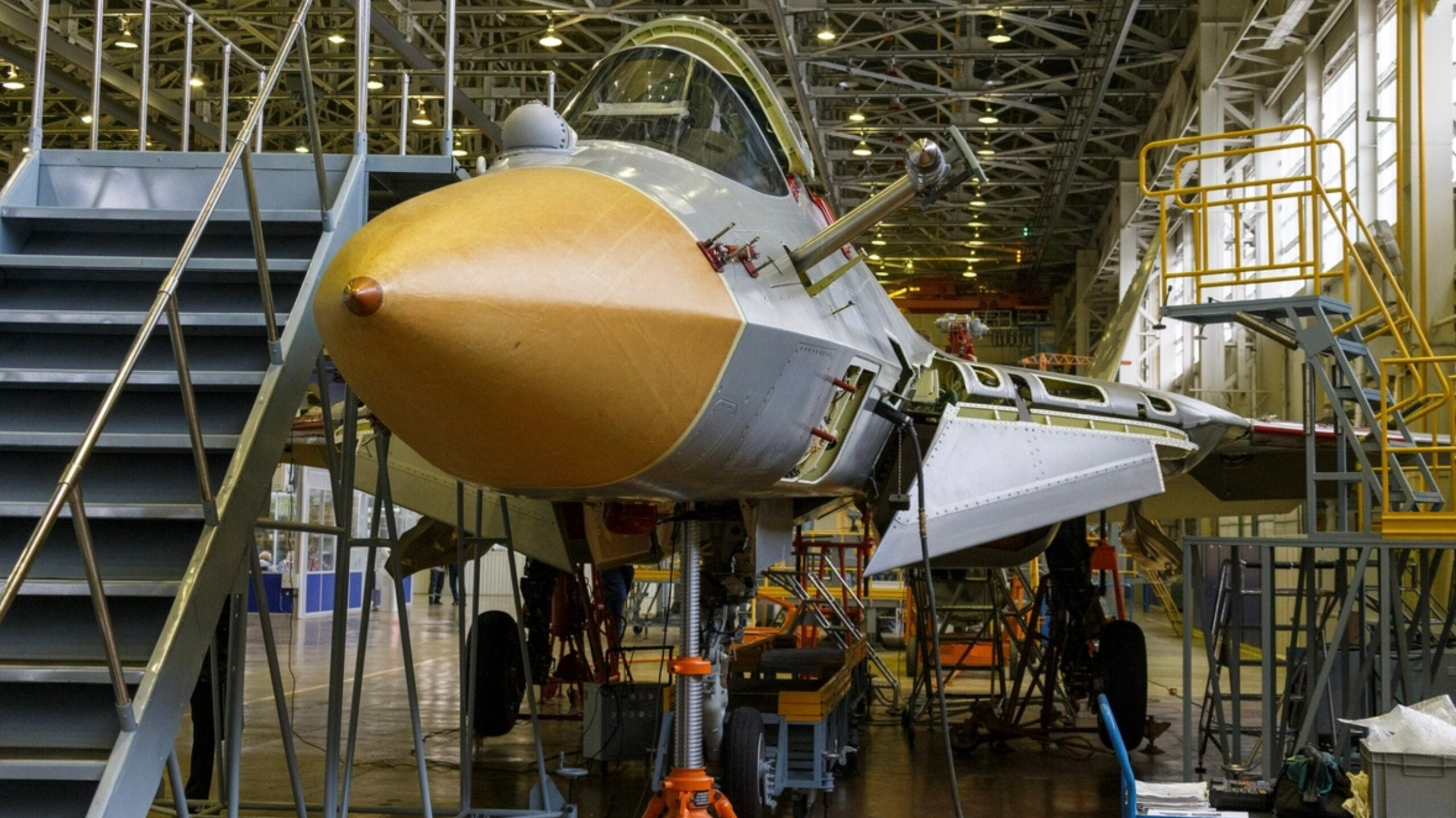The Russian Ministry of Defense has released images of the second series-production Su-57 Felon advanced combat jet, which is now under construction. The first production example crashed during a flight test last year. You can see that aircraft while under construction here. Russian Defense Minister Sergey Shoigu had led a delegation to Sukhoi’s Komsomolsk-on-Amur (KnAAZ) aviation plant to inspect the aircraft on Aug. 12, 2020, as part of the commemoration of Russia’s Air Force Day. This aircraft is known to the factory as T-50S-2 and by the serial number 51002. You can read all about the Su-57’s unique feature-set and design philosophy in this previous War Zone feature.
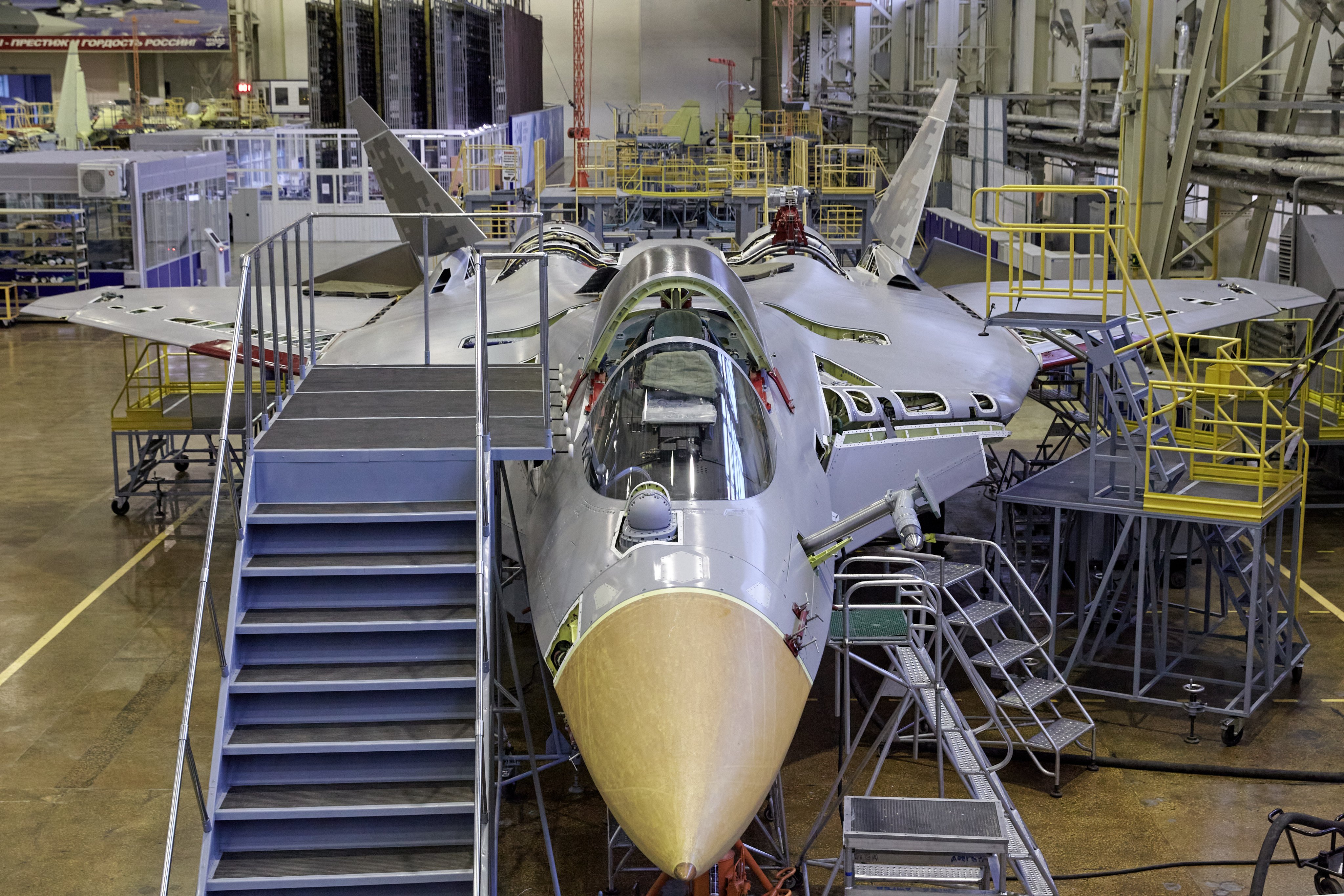

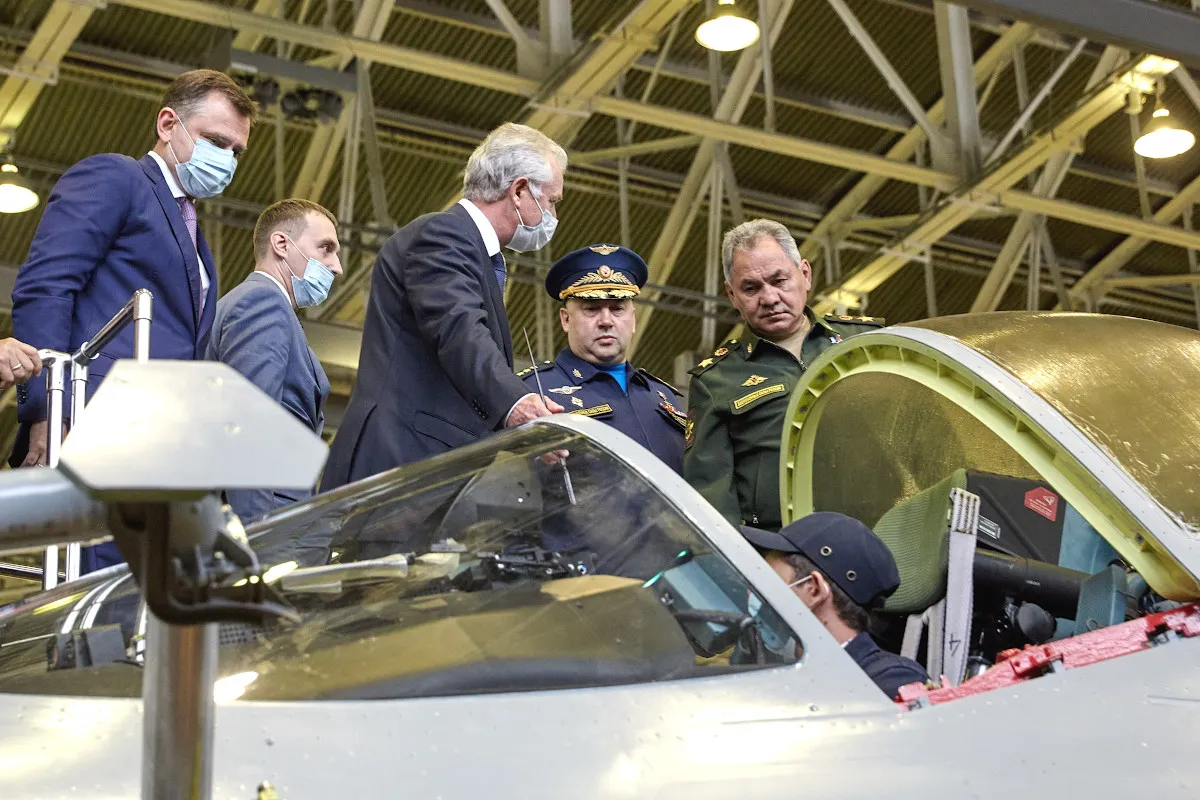
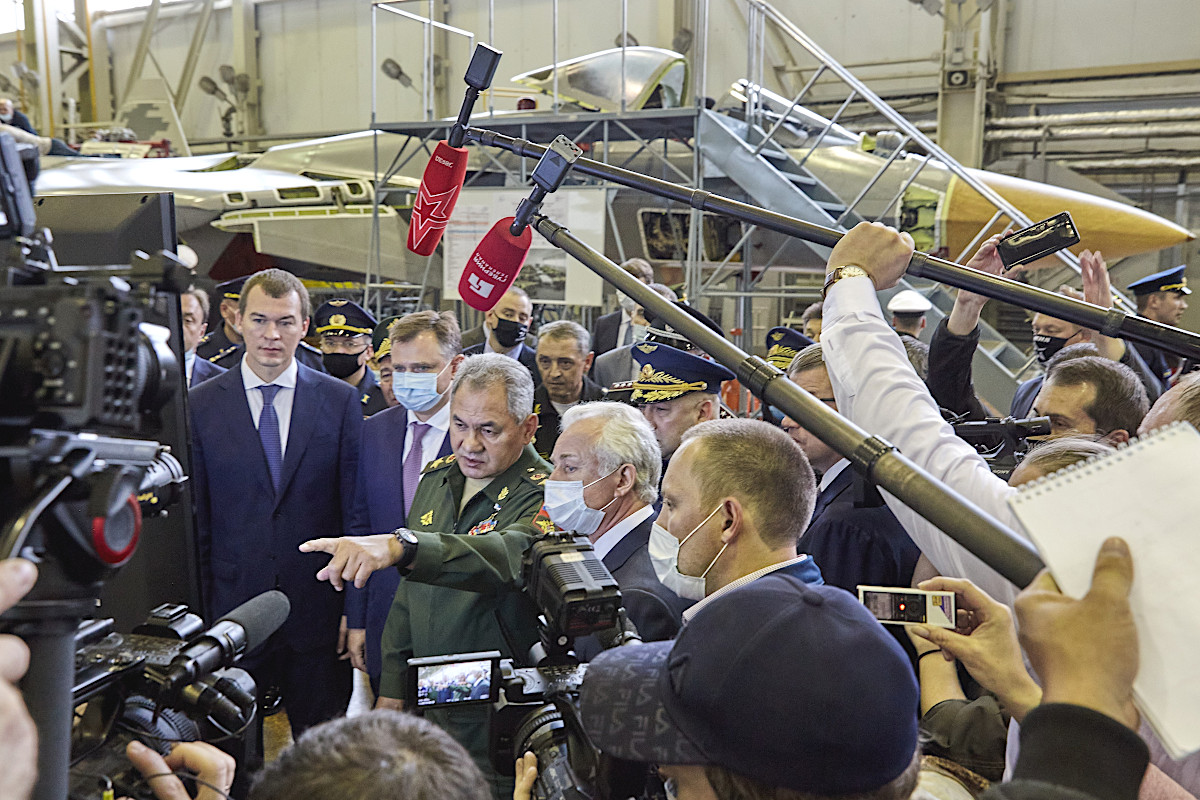
Interestingly, the images clearly show the Su-57’s 101KS-V infrared search-and-track (IRST) targeting system installed in the nose. Also visible is the aircraft’s offset inflight refueling probe and its unpainted, composite material nose radome. Its large, canard-like, leading-edge maneuvering flaps are also seen in their full downward articulated state. Like the ill-fated first production aircraft, this aircraft wears a pixelated “digital camouflage” scheme.
The released imagery shows also modified asymmetrical air inlets at the base of the leading edges of the twin vertical stabilizers. At least one previous aircraft from the original 11-strong test fleet carried this modification. The update could suggest differing cooling requirements exist for the systems supported by the two dorsal fin air scoops atop the wide engine installations.

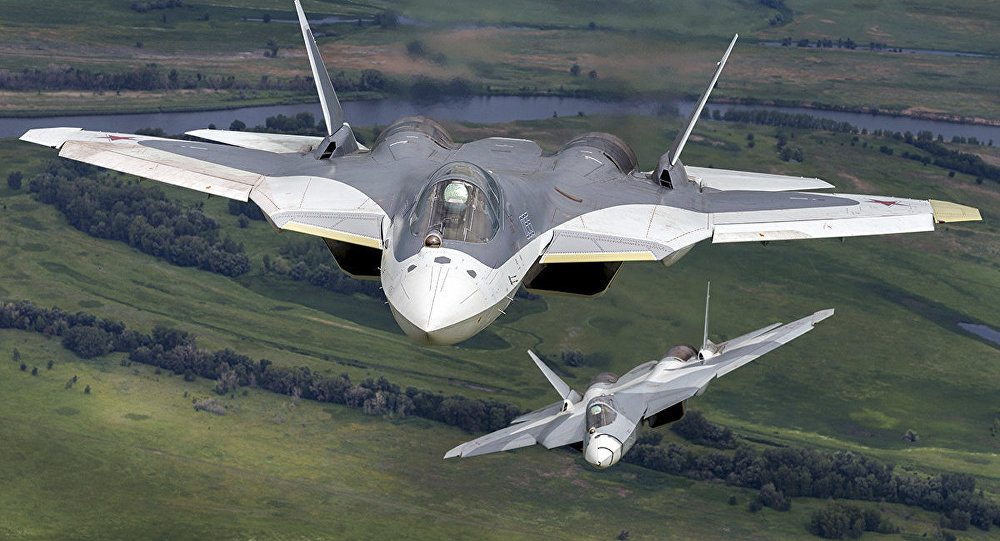
Steve Trimble, Aviation Week’s Defense Editor and good friend of The War Zone, also noted how the manufacturing quality on this latest aircraft appears to be of a higher standard:
This second production aircraft is part of an order for 76 examples that Russia announced in May 2019, which called for deliveries to be completed by 2028. It’s not clear how this schedule may have been delayed by the loss of the first production example on Dec. 24, 2019. The pilot ejected safely during that accident, which marked the first total loss of one of the new-generation Russian fighters. “The crash is due to a failure of the Su-57’s [flight] control system,” a Russian defense industry source subsequently told state-run media outlet TASS. “The tail control failed,” another source added.
While the Su-57 remains perhaps the most advanced Russian combat aircraft project, the fighter has faced some significant pitfalls since development began in 2002. The initial serial production versions lack the promised new-generation engines. There have been some highlights too, such as a well-publicized “combat evaluation” in Syria, although the details of what was achieved in that deployment remain sketchy.

Despite high hopes, the Russian Ministry of Defense has still only placed firm orders for 76 production aircraft, and the country’s aircraft industry remains engaged in the manufacture of the Su-30, Su-34, and Su-35.
With the demise of Indian interest in the Su-57 — which was being proposed to New Delhi as the Fifth Generation Fighter Aircraft (FGFA) — the Kremlin has reportedly been pitching the aircraft to other potential foreign customers, including China and Turkey. Showing that progress is being made on the second initial-production jet could be a way to try and help drum up more foreign interest, especially after last year’s crash.
Wherever the next orders might come from, Sukhoi and the Russian Ministry of Defense are clearly making efforts to get the Su-57 back on track and Shoygu’s visit to the KnAAZ facility on Russian Air Force Day shows that they are keen to demonstrate a new impetus in the program.
Contact the author: jamie@thedrive.com
